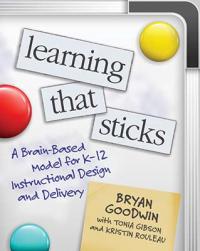
Once students have focused on new knowledge and begun to make sense of it, there’s one surefire way for it to find a home in long-term memory: repetition. To commit new learning to memory, we must return to it on multiple occasions spread over days or even weeks. This is the practice and reflect phase of learning. We repeat new learning to store it in our memory while at the same time reflecting on and receiving feedback on our progress to shore up gaps in our knowledge or skills.
So, what does this look like for remote learners? As it turns out, after some initial guided practice, students can engage in much of this phase of learning while working independently during so-called “asynchronous learning” time—the two to three days per week when students are at home in a hybrid learning model. Here are few tips from the science of learning to help remote learners maximize their independent/asynchronous learning time to practice and reflect on learning:
- Use frequent, ungraded quizzes to support retrieval practice. One of the most powerful ways to embed new learning into deep memory is to force our brains to recall it—even if (or especially if) it’s not yet fully committed to memory. Researchers refer to this as retrieval practice. In classrooms, we might simply call it a pop quiz. A wide array of online quiz and polling tools—many of them free or low cost—are available to help you start or punctuate your lessons with short quizzes that focus students on key facts, skills, and ideas they may have learned the night before—or even days or weeks earlier. You need not grade these quizzes. It’s better, in fact, to leave them ungraded, so students know they are designed to support memory, not increase anxiety. Be sure to provide students with answers shortly after taking the quiz so they can embed correct information into their memories. Frequency is important, too—the more often you help students strain to recall prior learning, the more they’ll be able to retain it. In short, you can do this every day. And the more students begin to expect the quizzes, the better learners and readers they’ll become—mentally quizzing themselves on their own as they encounter new learning.
- Create distributed practice opportunities for students. Another key insight from the science of learning is that “cramming” or massed practice—engaging in a single practice session (no matter how intense) fails to embed new learning in our long-term memories. The key to retaining new learning is distributed practice—spreading sessions out over days or even weeks. Often, though, students engage in massed, not distributed, practice—working one type of math problem on Monday, a different set on Tuesday, and another on Wednesday. We can rethink all of that with remote learning. On days when students engage in independent asynchronous learning (or are with us during marathon online classes), they can practice prior learning they may have covered in class days or even weeks earlier. But what if they’ve gotten rusty and don’t recall prior learning? That’s not a problem if you’ve archived your “flipped classroom” instructional videos they can return to for a refresher.
- Using online tools to support better practice. It’s also worth noting that more practice isn’t necessarily better. Students can actually practice for less time yet retain more if they focus their practice on knowledge and skills they haven’t yet fully retained or mastered. Researchers call this discrepancy reduction. And it happens to be the secret to better practice—from learning math facts to becoming a championship ice skater. A wide array of online study tools support better practice via discrepancy reduction—for example, creating digital “flash cards” that automatically drop items that students have mastered and repeat those they have yet to master, allowing them to practice less and learn more.
If this sounds heavily skewed toward rote learning, it is. This phase of learning is focused on helping students commit basic knowledge and skills to memory so that they can engage more effectively in the final, and most important, phase of learning, extend and apply, which I’ll cover in my next post.

